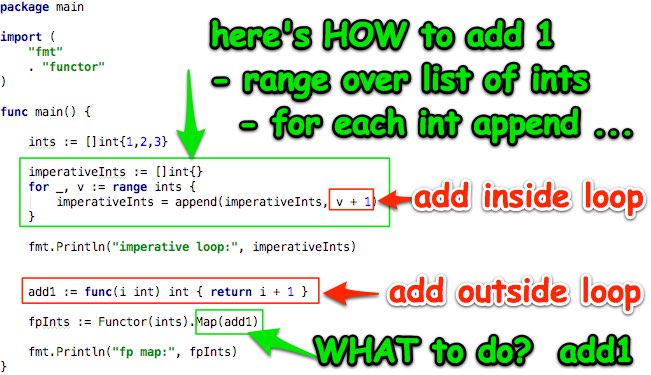Understanding functors
A functor is a structure-preserving transformation between categories. In other words, a functor is a mappable type. Let's see what that means with an example.
An imperative versus pure FP example
Suppose we start with a slice of ints, ints := []int{1,2,3}.
In imperative programming, we write all the scaffold code to implement exactly how to process this slice of ints. In pure FP, however, we tell our functor what we want the loop to do:

Here's the output:
imperative loop: [2 3 4] fp map: [2 3 4]
Let's see how this works.
What did that Map function do for us?
The Map function abstracted the loop. We don't have to bother writing the same old range/for looping code. We simply pass in our original ints list and tell our functor to map that slice into a slice where each element is one greater than it was before. This is a lot like SQL, where we declare what data we want and let the database engine worry about how to get the data.
What possible benefits can this afford us?
Do we...



























































